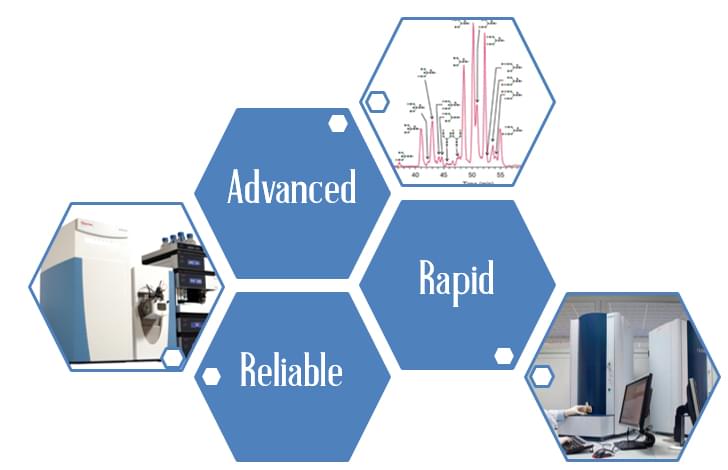

Antibody Glycan Analysis Service
Creative Biolabs offers a range of analytical services for glycosylation characterization of antibodies and other glycoproteins. Our tests are performed according to the ICH Q6B guidelines (Test Procedures and Acceptance Criteria for Biotechnological/Biological Products). We employ high-standard products, optimized protocols and multiple orthogonal techniques depending on different physical and/or chemical principles to ensure the validity and reproducibility of the results. Our antibody glycan analysis service is suitable for antibodies. You can count on our experienced scientists to help ensure the specialized, reliable and high-quality solutions for early discovery, process optimization, pharmacokinetic/pharmacodynamic (PK/PD) studies, and documentation of clinical batches.
Glycosylation is one of the most common post-translational modification and generally has a major impact on the efficacy and stability of biopharmaceuticals. Increasingly sensitive and accessible techniques have been developed for the qualitative and quantitative analysis of the glycoform profile of glycoproteins. Creative Biolabs keeps up with the most current and high-level techniques, and has developed a series of standard analytical methods.
Antibody glycan analysis generally includes three parts
Part 1: Determination of the N-glycosylation site
To identify the N-glycosylation site, N-glycans are cleaved by glycoamidases such as PNGase F in presence of H2O18, resulting in a mass shift of +2.9890 at each glycosylated Asn residue, then these specific sites are identified by LC-MS/MS analyses.
Part 2: Determination of the glycoform of the antibody
For the analysis of glycoform in each site of the antibody, MS detection of molecular weight of the intact antibody (Q-Tof MS) before and after PNGase F digestion, or the PNGase-released glycans (MALDI-TOF MS) can provide important information of the glycoform on the antibody. Normal-phase HPLC or HILIC analysis of fluorescence-labeled released glycans is an alternative method.
Part 3: Further identification by glycopeptide mapping experiment
The antibody is digested by a series of proteases, resulting of small peptide and glycopeptide fragment. After enrichment, the glycpeptides fragments are analyzed by LC-MS/MS. Glycopeptides and their glycoforms are identified after automated data analysis. All data is compared with expected sequence of the antibody.
Sample requirements
The purity and amounts of antibody are required for mass spectrometry. Samples should be prepared in a clean environment and avoid contamination of human keratin. The chromatographic purity should be above 90%. Samples can be submitted in solution or lyophilized. Avoid detergents and keep the buffer concentration at a minimum. The minimum amount of the sample is about 0.5 mg. The sample should be sealed into a microcentrifuge tube, and shipped in +4 oC for the liquid sample.

References
- Aich, U., Lakbub, J., et. al. (2016) State of the art technologies for rapid and high-throughput sample preparation and analysis of N-glycans from antibodies. Electrophoresis, 37(11):1468-88.
- Bondt, A., Rombouts, Y., et. al. (2014). Immunoglobulin G (IgG) Fab glycosylation analysis using a new mass spectrometric high-throughput profiling method reveals pregnancy-associated changes. Molecular & Cellular Proteomics, 13(11), 3029-3039.
For research use only. Not intended for any clinical use.
This site is protected by reCAPTCHA and the Google Privacy Policy and Terms of Service apply.
